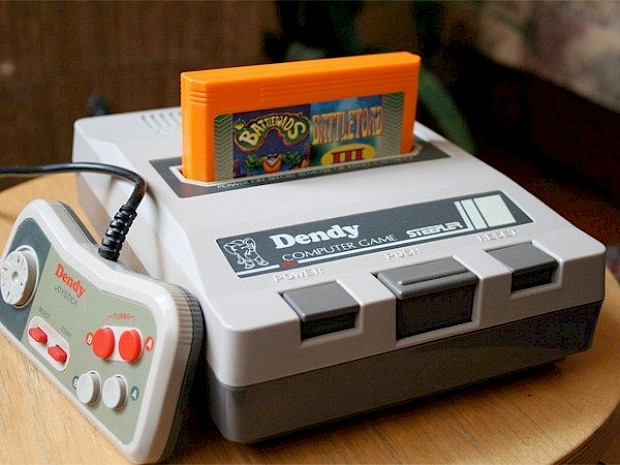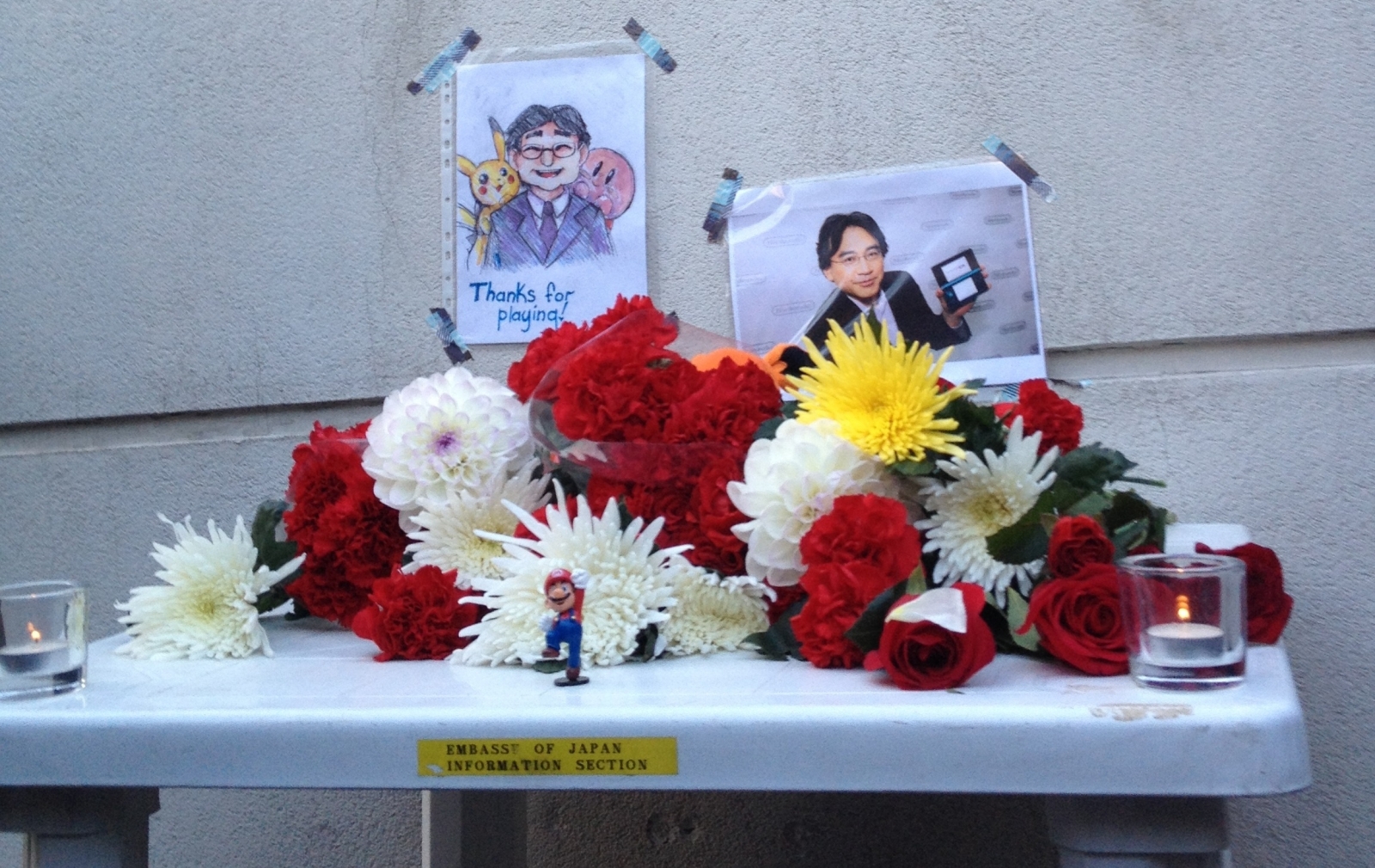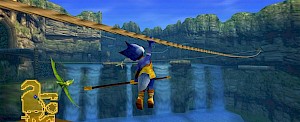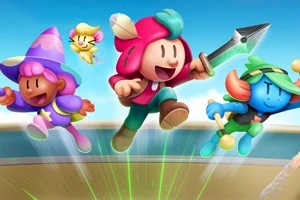Feature: Where Nintendo is getting it wrong in the East (no, not Japan).

Posted 12 Nov 2015 at 13:49 by Nick Lone
When people think of Nintendo, rarely will they think to associate the company with Russia. Nevertheless, it was indeed Russia, or more precisely the Soviet Union, which helped give the Game Boy its big break in 1989. Yes, “Tetris,” the Soviet mind game, which was originally bundled with Game Boy systems in both Europe and North America, has gone on to sell over 35 million copies on the system to date. So here at N-Europe, we decided to take a look at what Nintendo is doing (both right and wrong) in the land that helped give it’s handheld console a kick-start over 25 years ago.
Since Tetris’ release communism has fallen faster than level nine tetrimions, the free market has torn its way through the former Soviet States and video games have become big, big business. In the past 10 years, firstly with the Wii, Nintendo has built itself up a semi-official (albeit small) presence in some parts of Eastern Europe, a land where since the early 90s, and still to this day, piracy reigns supreme. The word “Dendy” may not be familiar to more Western based readers of this site, but in Russia and Eastern Europe – this is Nintendo. Manufactured as a hardware clone of the NES in Taiwan, the first Dendy console sold roughly two million units from its release in 1992 up to its discontinuation in 1996 (costing your average consumer roughly $40-60). Now, two million may seem small in a region so vast, but this was the closest thing to an “official” model there was. Countless other knock-offs and 100-in-1 bundles were also sold during this period. Speak to any Eastern European or Russian between the ages of 21 and 40, and Nintendo nostalgia is a real, live, palpable thing.
So what can Nintendo do to expand its presence and sales in a region that shares such a peculiar history with the company? We will pick through, firstly, where the big N are making progress, secondly, where they perhaps are not, and finally, what kind of opportunities are available to them in the future.
Nintendo now officially translates Wii U and 3DS games into Russian. The system language can also be set to Russian on current Nintendo devices. Due to the fact that a great number fewer Russians speak English than your average European, this is a huge step in the right direction for the country. More importantly, the translations are of a distinctly high standard. Even though Nintendo is not really known for its text-heavy games, the Russian language versions of their games really manage to capture the uniqueness of the ‘Nintendo magic’. Luigi’s Mansion: Dark Moon being a stand out example. The quirkiness of Professor E. Gadd’s character really comes out well in the text, with genuine laugh-out-loud moments. Nintendo should be commended for this effort and for not just churning out quick or average translations for the sake of it. Long may it continue and become a standard for all European releases in the future. Additionally, Nintendo of Russia now broadcasts Nintendo directs in Russian, usually less than 24 hours after the live broadcast. While this usually comprises of a text translation or a voice over, the audience is being catered for. Today’s Nintendo direct will be broadcast live in Russian at 1am Moscow time (13th Nov).
Many readers of this site will be familiar with Nintendo events, particularly in Europe and North America, where the public can play unreleased games and people generally gather for Nintendo related fun and get some streetpasses. Moscow has become the latest addition to this trend, with a number of events taking place over the past couple of years. “Level up day”, held in November last year, invited Nintendo fans to play the then unreleased Smash Bros U, as well as Pokemon Alpha Ruby / Sapphire. Tournaments were held for these games along with the Pokemon trading card game. A premiere of the latest Pokemon movie was also shown in Russian. The daylong event attracted a large number of visitors and was considered a huge success by fans. If Nintendo is serious about the Russian market, then this is certainly a good start, and the growing success of these events reflects positively for the future with St. Petersburg hopefully next on the list. The sad and unexpected passing of company president Satoru Iwata was also marked at the Japanese embassy in Moscow, where Russian Nintendo fans laid tributes to Iwata San.

Tributes to Satoru Iwata from Russian Nintendo fans outside the Japanese Embassy, Moscow.
Unfortunately, in contrast to this, Nintendo has almost entirely disappeared from Russian shops over the past year. In St. Petersburg, for example, the second biggest Russian city, only independent retailers stock Nintendo products. The big electronics stores have almost completely stopped stocking Nintendo consoles, games and Amiibos. Undoubtedly, this is an economic decision, an example not a far cry from the one witnessed in the UK, when many supermarkets decided to halt the sale of Nintendo products after the launch of the Wii U. If a product doesn’t sell, why stock it? It must be noted here however, that there is something else at play in Russia, which is largely out of Nintendo’s hands.
As many will undoubtedly be aware, the rouble’s value crashed at the end of 2014. One euro used to cost 40 roubles, now it stands at 70. Inflation is rampant and Russians are having to cope with increasing prices in food, goods and services, while salaries remain stagnant. All three console manufactures adjusted their prices to the new rouble rate (admittedly, Nintendo did this much later than the other two, a decision widely applauded by fans). So, a New 3DS will set you back 12,000 roubles and a Wii U 17,500. New games on both consoles sell for 3,500-4,000. The prices almost directly align with the European prices if the currency is directly exchanged. Now imagine one year ago, these prices were 40-50% cheaper in rouble terms and you can begin to understand where this is going. The average middle class Russian cannot justify spending this much money on video games, especially when disposable income is being squeezed. Would many Western Europeans pay upwards of 85 euros (by the old exchange rates) for a new Nintendo game? Unlikely.
A number of Western European gamers indeed rejoiced when the rouble crashed, with some setting up Russian eShop accounts allowing them to purchase games on the cheap. Perhaps this even influenced Nintendo’s decision to put prices back in line with the rest of Europe. However, there is a strong argument that this was the wrong decision entirely. As mentioned earlier, Russians are not used to paying for software, piracy is still the accepted norm and asking them to fork out a huge amount of money, twice as much as before, is almost certainly not going to convince habits to change. Steam has combatted the currency crisis by not increasing prices. Grand Theft Auto V can be purchased for the old standard price of 2,000 roubles, or 28 euros, just over half the price in European markets. There is little on Steam for more than that price. A company’s ability to adapt to unique market conditions is key to its success in a region, and Steam has demonstrated its determination not to give up on such a potentially huge market (In Moscow and St. Petersburg alone there are 20 million people, with many falling under middle class status). Changes have been made, of course, games can only be purchased using a Russian bankcard to prevent exploitation, and some games cannot be played outside the Russian Federation. Logical steps, which support and protect the Russian consumer without negatively impacting the service abroad. Nintendo could, in theory, implement similar steps in the eShop or even with disc based games if they truly are serious about overcoming the challenges the rouble poses. The rewards would undoubtedly be worth it, especially when Microsoft and Sony have rejected this path.
In Eastern Europe the situation is somewhat regrettably worse. Nintendo doesn’t even have an official presence in the region, like it does in Russia. Furthermore, many countries don’t have eShop support (except Poland), which could easily be used in place of retail. Shelf space is almost exclusively occupied by Microsoft and Sony. In 2015, in a territory with a shared currency, is this really acceptable? Is it that difficult to amend? In Latvia and Estonia for example, Wii U consoles and games are sold in some big department stores, but everything is imported from Germany or Finland and, most importantly, sold for way over the RRP. It is understandable that these territories are small, and maybe insignificant in the grand scheme of things, but the movie industry gets by just fine by releasing films in English with subtitles. The number of Russian and English speakers in the Baltic States is huge, and besides, the populations are used to consuming media in these languages, Nintendo would not need to make any real extra effort to raise its profile in the region. Poland, on the other hand, is a different kettle of fish. Doesn’t a country with a population of almost 40 million and an already huge video games market deserve a version of a game in their own language? If the Dutch and Portuguese get it, why don’t the Polish? Microsoft and Sony both support Eastern Europe, so what’s stopping Nintendo? Even simple things like streetpass maps for these countries in the Plaza appear to be a step too far for them, and honestly, it seems like an insult to fans from the region.
So Eastern Europe and Russia are receiving mixed messages from Nintendo, support is there in some areas and fragmented in others. The worst thing Nintendo could do is underestimate the region. Let’s not forget that many people here grew up with Nintendo, and nostalgia for the company could be exploited (or played too, if you prefer). This is a huge advantage for the region over say China or India. Nintendo’s efforts to engage with the Russian audience is praiseworthy, highlighted by the amount of Nintendo based discussion on fan pages on Russian social media platform Vkontakte, which is both informed and intelligent (Splatoon gets a particular amount of love). The influence of Japanese culture, especially in the East of Russia, also could play into Nintendo’s hand, with Yokai Watch coming up and Pokemon maintaining high levels of success, this maybe should be what Nintendo pushes most, aiming towards kids with appropriate marketing budgets. This strategy worked in the West with the NES and the Super NES, with many kids becoming life-long fans. Similar to Western Europe, adults could be targeted more subtly, using nostalgia and play mechanics as unique selling points.
Price, nevertheless, has undoubtedly become a barrier, so this should be seriously considered and addressed if Nintendo wants to succeed, particularly in Russia. Would Nintendo take the financial hit to build up a healthy install base and expand their audience? Further expansion into Eastern Europe has to happen properly if Nintendo wants to make up ground on Microsoft and Sony, these regions, ideally, should become fully integrated into Nintendo of Europe, even at a basic level. eShop support, streetpass hotspots and maybe country specific discounts could kick start everything, they even could be used as a means of announcing their ‘official’ arrival. Perhaps rather ironically, the key to Nintendo’s success could lie with their smartphone plans. The number of iPhone users in Eastern Europe and especially Russia is huge. If Nintendo’s smartphone plans are fun, intuitive and different, the audience will lap it up. Done properly, Nintendo has the potential to become a well-known brand in the region solely in this way.
While we Western Nintendo fans lament the mainstream failure of the Wii U, Nintendo is yet to support Eastern Europe in an official and full capacity. There is a potentially huge audience waiting to experience the Big N. Hopefully, if Nintendo is willing to adapt itself to the challenges the East poses, they have the opportunity to establish a loyal and dedicated fan base for many years to come.






















